Samsung SyncMaster 940UX USB Monitor Review
Samsung SyncMaster 940UX USB Monitor
The Samsung SyncMaster 940UX could well be the most innovative monitor we've ever seen.
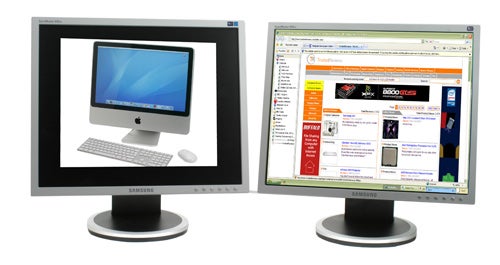
Verdict
Key Specifications
- Review Price: £195.00
I’ve been a technology journalist for a very long time, and I’ve seen a great many technological breakthrough during that time. But the problem with having many (maybe too many) years behind you, is that you become somewhat jaded and sceptical. So while manufacturers are evangelising about their latest product or technology, I often find myself sitting there wandering what all the fuss is about. But once in a while a new technology appears that really does make me sit up and take notice, and sometimes that technology really is a new breakthrough.
Samsung’s SyncMaster 940UX monitors have done just that, they’ve made me sit up and take notice, because these monitors represent the most important step forward in display technology since the introduction of the DVI port. You see the 940UX incorporates DisplayLink technology, which makes connecting multiple monitors, digitally to any PC simpler than it has ever been.
First up, if you’re not running a dual monitor setup on your PC – why not? I can honestly say that there is no single upgrade that increases productivity more than having multiple monitors with increased desktop real estate. The ability to have more windows open, active and viewable at once, saves a surprising amount of time and clicking. Also, with a dual monitor setup, you can create an large desktop size, without paying through the nose for a large single monitor – plus, you’re not having to throw away the monitor you already have.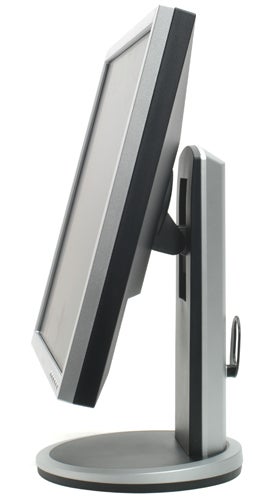
So, why do so many PC users shy away from dual monitor setups? The simple answer is that the whole process isn’t as easy as it could be. Yes, graphics drivers from both ATI and nVidia have come on in leaps and bounds over the past couple of years, and pretty much every graphics card out there will support dual monitors, but taking all the necessary parts and making them work together isn’t always so simple.
Actually configuring your graphics driver to recognise both screens, in the right positions, at the right resolution and in the right orientation can sometimes be difficult. And even after you’ve set your screens up perfectly, you will often find that when you turn your PC on, those settings have randomly disappeared and you’re left trying to figure out what went wrong – yes, this has happened to me on several occasions. This is why many corporate or even medium sized businesses have not gone down the dual monitor route – the fear of increased technical support calls, outweighs the potential increase in productivity.
DisplayLink solves the problem of dual monitor setup and maintenance, and brings with it some inherent advantages that a traditional display configuration simply can’t compete with. DisplayLink allows you to connect multiple monitors to a PC using nothing more than a USB port – simple as that.
The key to DisplayLink technology is the hardware rendering engine chip which converts the digital data being sent across the USB port into an image that’s viewable on the monitor. This completely negates the need for a graphics card to drive extra displays and takes the usual dual display problems out of the equation. 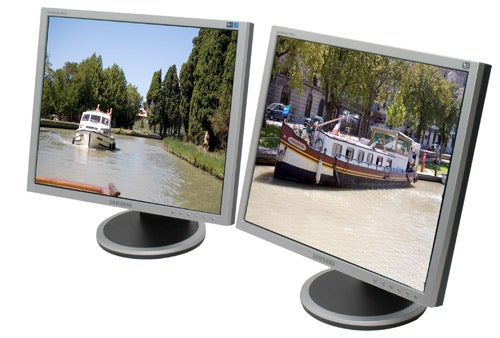
The SyncMaster 940UX monitors ship with the DisplayLink hardware rendering engine chip embedded, so they are ready to accept a video signal over USB straight out of the box. What’s even more impressive is that also embedded in the monitor is some flash memory that houses the drivers necessary to get the system up and running. So, all the user has to do is connect the monitor to a USB port, then the drivers are automatically installed to the PC. Once the drivers are loaded, the monitor will just be added as a new display under Windows display options.
That makes it all sound very simple, and it is, but in reality it’s not just as simple as a driver install. What’s actually being installed onto the PC is a virtual graphics card (VGC). This then convinces Windows to pipe the pixel stream to it, then converts said pixel data into a losslessly compressed transport protocol that is sent down the USB 2.0 connection. The hardware rendering engine embedded in the 940UX then decodes this stream and displays the image.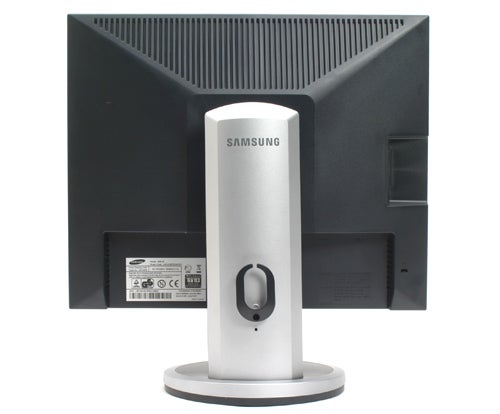
Now, you may be wondering how much latency this procedure introduces, but DisplayLink and Samsung both insist that it’s transparent to the end user, and having spent some time with this technology, I’d have to agree. Obviously these monitors are aimed at general Windows work, rather than gaming or even video streaming, but even so, I had no problem streaming standard definition video over the link.
Up until now I’ve talked about how DisplayLink technology offers some significant advantages over traditional dual monitor setups, but you can have far more than two SyncMaster 940UX screens attached to your PC if you so desire. In fact you can connect up to six 940UX screens to a single USB 2.0 port – each of the screens has a USB hub built-in, and you can daisy chain one after the other. In the picture below you can see five SyncMaster 940UX displays hooked up to a single notebook – I would have gone for six, but Samsung couldn’t rustle up a sixth screen for me. 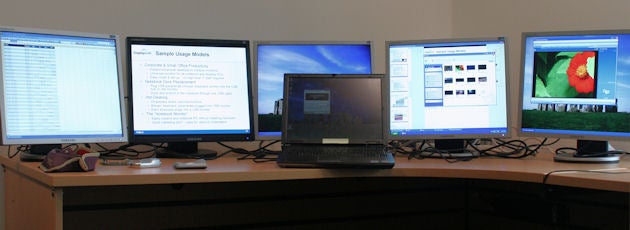
The notebook aspect of this technology is key, since although notebooks with DVI and even HDMI outputs are available, the vast majority of notebooks still only offer D-SUB outputs for video. The lack of digital video output is most prevalent in the ultra-portable notebook market, but even the slimmest, lightest notebook has USB ports. This means that even ultra-portable notebook users can connect digitally to an external monitor – or even several external monitors. And because the SyncMaster 940UX displays have built-in USB hubs, you can plug your keyboard, mouse and other peripherals in via the monitor, so even if you’ve only got two USB ports on your notebook, it’s not a problem.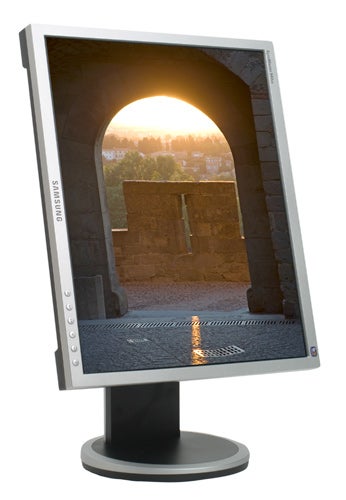
You’ve probably noticed from the pictures that the SyncMaster 940UX is a 4:3 aspect ratio monitor, rather than a widescreen display. This was a conscious decision on Samsung’s part, since much of the corporate sector is yet to jump on the widescreen bandwagon, and Samsung feels that this is the sector that will be most attracted to the USB connectivity feature initially. I agree with that strategy to a certain degree, but I do feel that widescreen is the way forward, even in the corporate sector. Trust me, once you’ve used a widescreen display for a while, you won’t want to go back.
Image quality wise, I put two SyncMaster 940UX screens next to each other, both connected to the same notebook – one hooked up via DVI and the other via USB. The result was that the USB connected screen looked every bit as good as the DVI connected one. In fact, the display using USB looked subjectively better than its traditional, digitally connected cousin.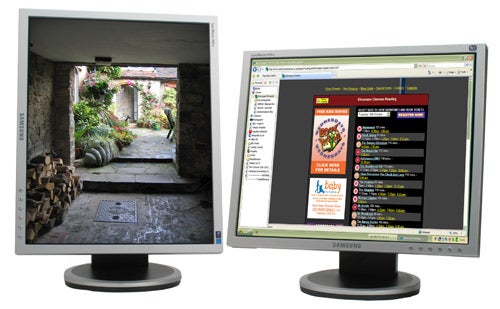
When it comes to general image quality, the 940UX gives a pretty good account of itself. Colours are rich and vibrant, without suffering from the garish over saturation the afflicts some LCD monitors. There’s a hint of compression at the low intensity end, which is highlighted by the Colour Scales test in DisplayMate. At least there is no hint of colour creeping into the greyscale tests. As always though, the DisplayMate screens highlight weaknesses, but such weaknesses often don’t rear their head in general Windows work.
Interestingly, although the driver for the 940UX automatically loaded without incident using a Windows XP based notebook, things didn’t work so smoothly using a Vista system. Although Vista recognised the flash drive as a virtual CD-ROM, when I tried to access it, Vista insisted that I needed to load a blank CD in the drive so that I could burn to it. Luckily Samsung also ships a CD with the drivers in the box, and once loaded from the CD, the 940UX worked fine under Vista. It’s worth mentioning that the guys from DisplayLink also told me that there will be Mac OS support very soon, which would mean that you could daisy chain Samsung USB enabled monitors from an iMac!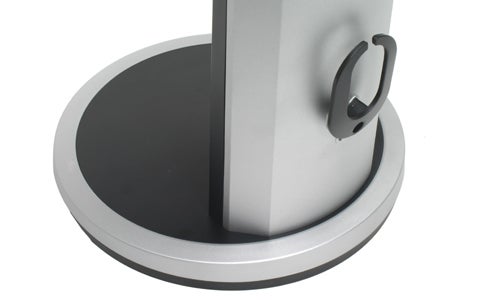
At the moment, the DisplayLink hardware rendering engine is limited to 1,600 x 1,200 resolution, but this will rise to 1,920 x 1,200 in 2008. The other really cool aspect is that this technology has already been demonstrated over a Wireless-USB connection, so you could well find yourself in the situation where you just place your notebook on your desk, and it automatically, wirelessly connects to an external monitor.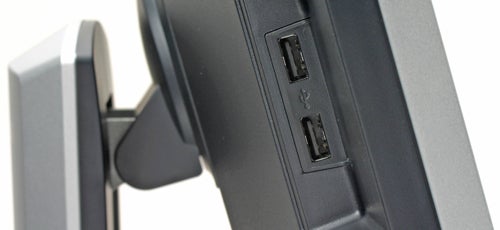
Taking the DisplayLink technology out of the equation for a minute, the SyncMaster 940UX has a lot going for it. The silver bezel surrounding the screen is very slim, lending itself perfectly to the notion of a multi-monitor setup. The height adjustment is also smooth as silk, while the pivot pad integrated into the base allows the screen to be swivelled completely around with ease. There’s also tilt adjustment and a cable management tidy mounted to the rear of the central column.
Of course the screen can also pivot, in case you prefer a portrait aspect ratio. In fact if you work on a lot of long documents, multiple monitors, side by side in portrait mode could be quite appealing. Being able to pivot the screen also makes it far easier to reach all the connections – talking of which, you’ll find DVI, D-SUB, USB and power. On the left side, you’ll find the integrated USB hub with two ports.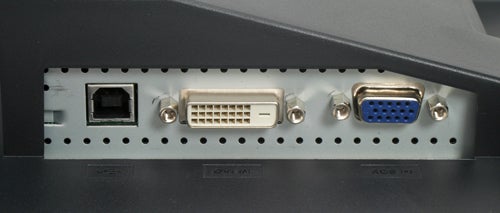
If there’s one downside to the SyncMaster 940UX, it’s the price. At £195 including VAT on the street, the 940UX is quite pricey for a 19in screen. That said, the non-USB 19in Samsung screen comes in at £169, so you’re actually only playing a £26 premium for the DisplayLink technology. And it has to be said, that as far as 4:3 19in monitors go, this is one of the best I’ve seen.
Ultimately, even with the high price, I think that the SyncMaster 940UX is a superb display, especially for anyone who works primarily with a notebook. No matter how small your notebook is, and no matter what graphics chipset it employs, you can now drive up to six external displays for as much desktop real estate as you’ll ever really need. And I for one, think that both Samsung and DisplayLink should be congratulated for bringing such an exciting new product to market.
”’Verdict”’
The DisplayLink technology that Samsung has embedded into the SyncMaster 940UX is truly superb, simple as that. Being able to hook up multiple screens digitally, over USB is an inspired idea, and a welcome feature for anyone who uses a notebook as their main computer.
I’m sure that the SyncMaster 940UX is the tip of the iceberg when it comes to USB display technology, and Samsung has already told me that there will be 1,600 x 1,200 displays and widescreen versions available next year. As it stands though, the 940UX is a great screen for anyone that needs multiple, digitally connected monitors.
Trusted Score
Score in detail
-
Image Quality 8
-
Value 8
-
Features 10

